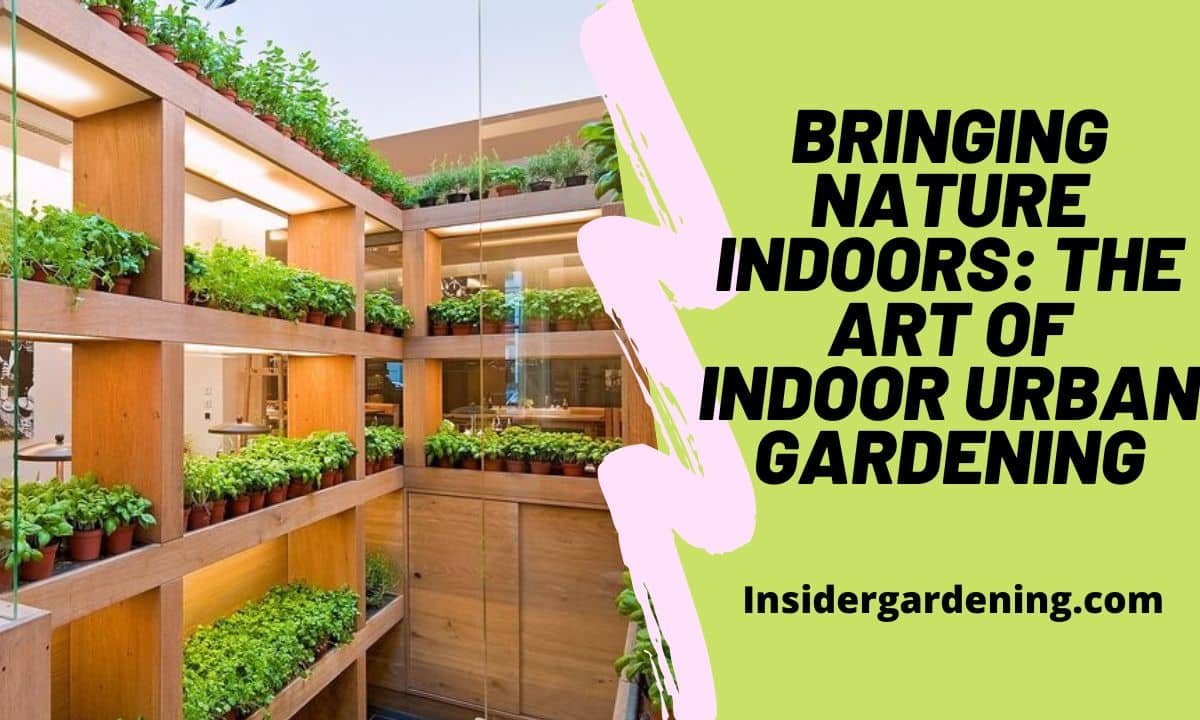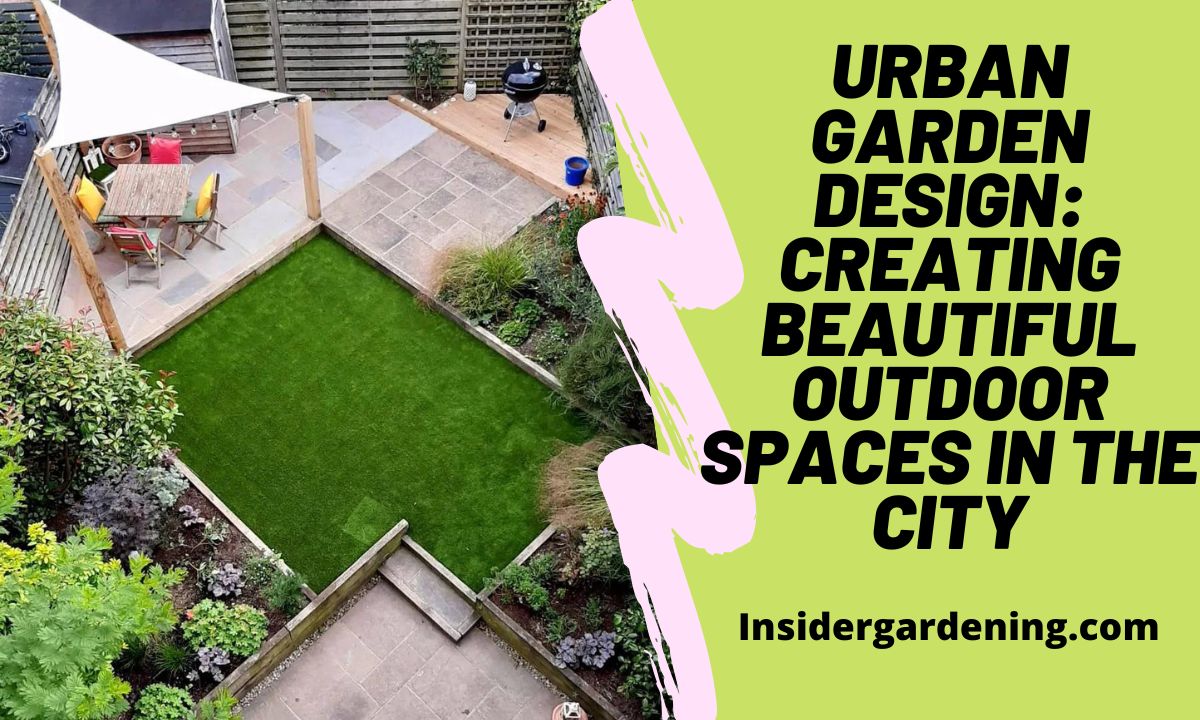Bringing Nature Indoors: The Art of Indoor Urban Gardening

In today’s fast-paced, concrete-draped urban environments, the yearning for nature has never been stronger. From bustling megacities to modest apartments in quiet neighborhoods, a quiet revolution is growing—one plant pot at a time. This movement, known as indoor urban gardening, is more than just a design trend. It’s a reconnection to nature, a therapeutic outlet, and a smart way to enhance air quality, mood, and even food security—all from within our homes.
Why Indoor Urban Gardening?
Urban gardening inside the home bridges a vital gap between modern urban living and the serenity of natural environments. Here’s why more people are embracing it:
- Mental Well-being: Studies show interacting with greenery reduces stress, enhances mood, and combats anxiety and depression.
- Air Purification: Many indoor plants filter toxins and emit oxygen, significantly improving indoor air quality.
- Aesthetic Appeal: A splash of green transforms sterile spaces into inviting sanctuaries.
- Food Production: From cherry tomatoes on your kitchen windowsill to herbs on your balcony, growing food indoors promotes sustainability and self-reliance.
Designing Your Urban Jungle
Creating your own green haven doesn’t require a garden or a terrace. What matters is thoughtful planning, plant selection, and creative use of space.
1. Know Your Space
Evaluate how much natural light your space receives. South-facing windows offer bright light, ideal for sun-loving plants like succulents and citrus. Dim rooms? No problem—plants like snake plants, ZZ plants, and pothos thrive in low-light conditions.
2. Pick the Right Plants
Start with low-maintenance varieties. These beginner-friendly choices are especially forgiving:
- Spider Plant (Chlorophytum comosum)
- Peace Lily (Spathiphyllum)
- Aloe Vera
- Philodendron
- Basil, Mint, Parsley (great for kitchen counters)
Once you’re confident, explore unique options like bonsais, orchids, or dwarf citrus trees.
3. Containers Matter
Select containers that reflect your style—ceramic pots, hanging baskets, repurposed glass jars. Just ensure proper drainage to avoid root rot. Use saucers or liners to catch excess water and protect surfaces.
4. Go Vertical
Short on space? Think up! Install vertical planters, wall-mounted pots, and tiered shelves to create lush, multi-dimensional displays. Vertical gardens also serve as a living artwork in small apartments.
Caring for Your Indoor Garden
Indoor plants thrive with a little love and attention. Here’s a quick care checklist:
- Lighting: Match plant needs with your light conditions. Use grow lights if natural sunlight is limited.
- Watering: Too much water is worse than too little. Touch the soil before watering—moist but not soggy is ideal.
- Feeding: Indoor plants benefit from monthly fertilizing, especially in the growing season (spring and summer).
- Pruning: Trim dead leaves and rotate pots occasionally for even growth.
Edible Gardening Indoors
You don’t need a plot of land to grow food. With smart planning, you can cultivate herbs, microgreens, or even dwarf veggies indoors:
- Herbs: Basil, thyme, rosemary, and chives are perfect for sunny windowsills.
- Leafy Greens: Lettuce and spinach grow well in shallow containers.
- Microgreens: Fast-growing and nutrient-dense; ready to harvest in 7–14 days.
Hydroponic kits and small indoor greenhouses are also great investments for serious edible gardeners.
♀️ The Wellness Connection
Indoor gardening isn’t just a hobby—it’s a mindfulness practice. Tending to plants slows us down, helps us focus, and builds a quiet, nurturing routine. During periods of uncertainty or digital overload, the act of watering, pruning, and simply observing growth becomes deeply grounding.
Studies even suggest that being around plants can boost concentration, improve memory, and even enhance productivity—no wonder offices and co-working spaces are leaning into biophilic design.
Small-Space Gardening Tips
Living in a studio or small flat? Here’s how to maximize every inch:
- Use hanging planters from the ceiling to keep surfaces free.
- Grow on windowsills using narrow trough-style containers.
- Combine function and decor with shelving units dedicated to plants.
- Choose multipurpose furniture like benches with built-in planters or storage drawers for gardening tools.
♻️ Sustainable Practices
Sustainability is at the heart of urban gardening. Use organic soil, compost food waste, and recycle containers creatively. Avoid synthetic pesticides—opt for neem oil or homemade garlic sprays to manage pests naturally.
Collect rainwater in small barrels for watering, and consider LED grow lights for energy efficiency. The more sustainable your garden, the greater your positive impact on the environment.
Selecting the Right Plants
Choosing the right plants is essential for successful indoor urban gardening. Consider the following factors when selecting plants for your indoor garden:
- Light Requirements: Assess the amount of natural light available in your home. Some plants thrive in bright, direct sunlight, while others prefer low-light conditions. Select plants that are well-suited to the lighting conditions of your indoor space.
- Space Availability: Determine the garden space available for your indoor garden. Consider the size and growth habits of plants to ensure they fit well in the chosen location. Compact and trailing plants work well in smaller spaces, while taller plants can be placed in corners or near windows.
- Maintenance Level: Evaluate your availability for plant care. Some plants require more frequent watering, while others are more drought-tolerant. Consider your lifestyle and choose plants that align with your maintenance capabilities.
- Aesthetic Appeal: Select plants that match your personal aesthetic preferences and complement your interior decor. Choose from a variety of foliage colors, textures, and shapes to create a visually appealing indoor garden.
Indoor Garden Care
Proper care is crucial for maintaining the health and beauty of your indoor urban garden. Follow these care tips for a thriving indoor garden:
- Watering: Ensure that you provide adequate water to your indoor plants. However, be cautious not to overwater, as it can lead to root rot. Check the moisture level of the soil regularly and water accordingly, allowing the top inch of soil to dry out between waterings.
- Lighting: Place your plants in suitable locations that provide the right amount of light. If natural light is limited, supplement with artificial lighting, such as fluorescent or LED grow lights. Position the lights at an appropriate distance from the plants to prevent heat damage.
- Humidity: Indoor environments can have lower humidity levels, which may affect certain plants. Increase humidity by placing a tray filled with water near the plants, using a humidifier, or grouping plants to create a microclimate.
- Fertilizing: Indoor plants often require regular fertilization to ensure optimal growth. Use a balanced, water-soluble fertilizer specifically formulated for indoor plants. Follow the instructions on the packaging for application rates and frequency.
Indoor Garden Design Tips
Designing your indoor urban garden adds to the overall aesthetic appeal of your space. Consider the following design tips:
- Grouping Plants: Grouping plants together creates a visually stunning display and promotes a more humid microclimate. Cluster plants with similar light and moisture requirements for easier care.
- Utilizing Different Heights: Incorporate plants of varying heights to create a layered and dynamic indoor garden. Tall plants can be placed in the background or corners, while shorter plants can be placed in the foreground.
- Decorative Elements: Enhance the beauty of your indoor garden with decorative elements such as decorative stones, pebbles, or miniature figurines. These elements add visual interest and create a personalized touch.
- Consider Seasonal Plants: Rotate plants in and out of your indoor garden to showcase seasonal varieties. This keeps your indoor garden fresh and allows you to enjoy different plants throughout the year.
️ A Greener Urban Future
Indoor urban gardening is more than a lifestyle trend—it’s a quiet revolution in how we coexist with nature. It reminds us that we are not separate from the environment, but part of it. Whether you’re nurturing succulents in a high-rise, herbs on a fire escape, or a vertical garden in your kitchen, every leaf and petal brings life back into sterile spaces.
In a world of screens and speed, indoor gardens whisper a different rhythm—one of patience, growth, and gentle connection. It’s not just about planting seeds in soil, but planting peace in our lives.
Frequently Asked Questions
FAQ 1: Can I Grow Vegetables Indoors?
Yes, many vegetables can be successfully grown indoors. Leafy greens like lettuce, spinach, and kale, as well as herbs like basil, parsley, and mint, are popular choices for indoor vegetable gardening.
FAQ 2: Can I Grow Fruit Trees Indoors?
Certain dwarf fruit tree varieties, such as citrus trees or fig trees, can be grown indoors with proper care. They require adequate light and sufficient space for their growth.
FAQ 3: How can I prevent pests in my indoor garden?
To prevent pests in your indoor garden, regularly inspect your plants for signs of infestation. Keep a clean environment by removing dead leaves or debris. If pests are present, use organic pest control methods like neem oil or insecticidal soap to treat the affected plants.
Conclusion
Indoor urban gardening allows us to surround ourselves with the beauty and benefits of nature within the confines of our homes. By selecting the right plants, utilizing various indoor gardening techniques, and providing proper care, you can create a lush and thriving indoor garden. Enjoy the serenity, fresh air, and visual appeal that indoor gardening brings, and revel in the joy of nurturing and witnessing the growth of your indoor oasis.




